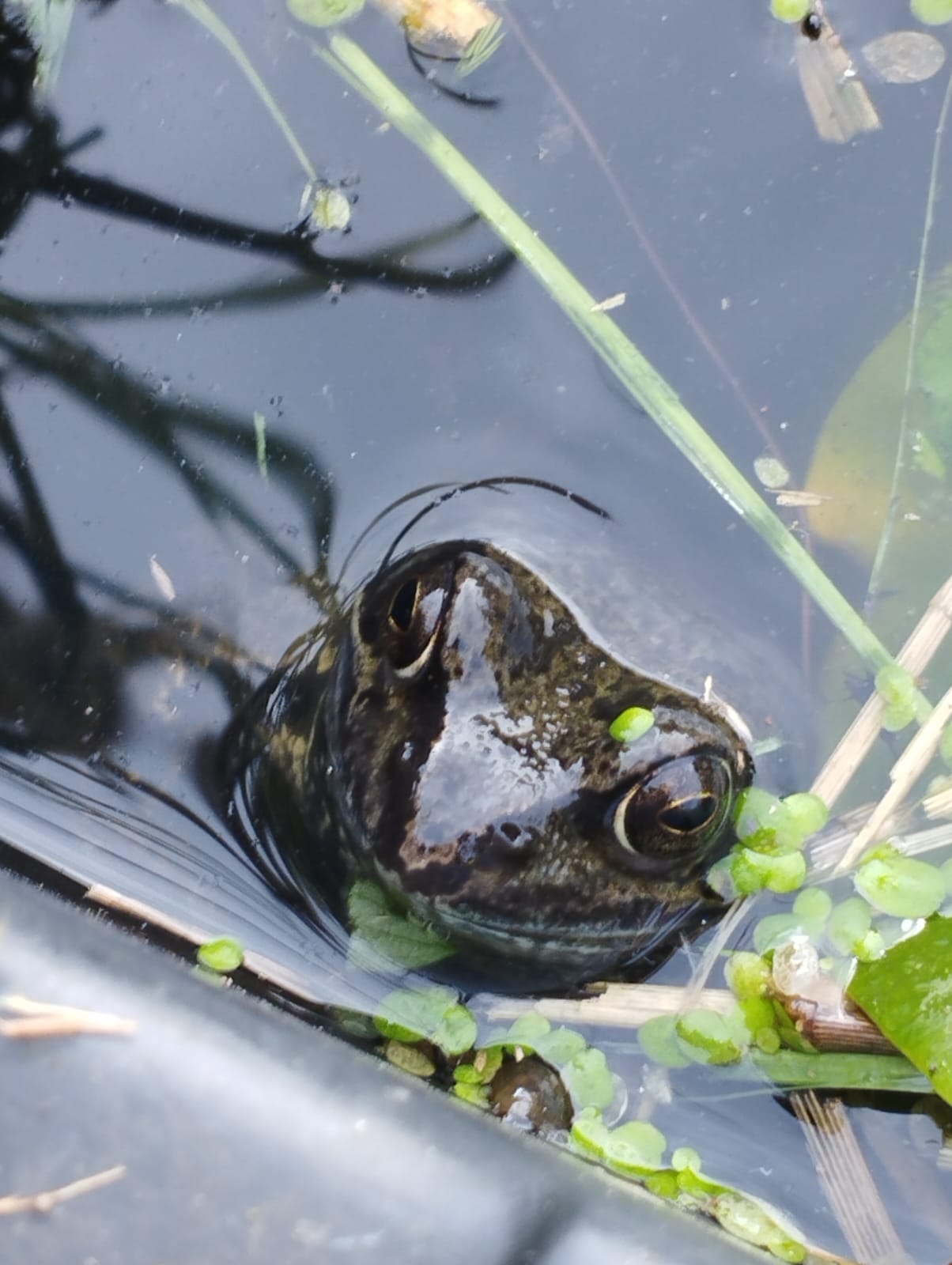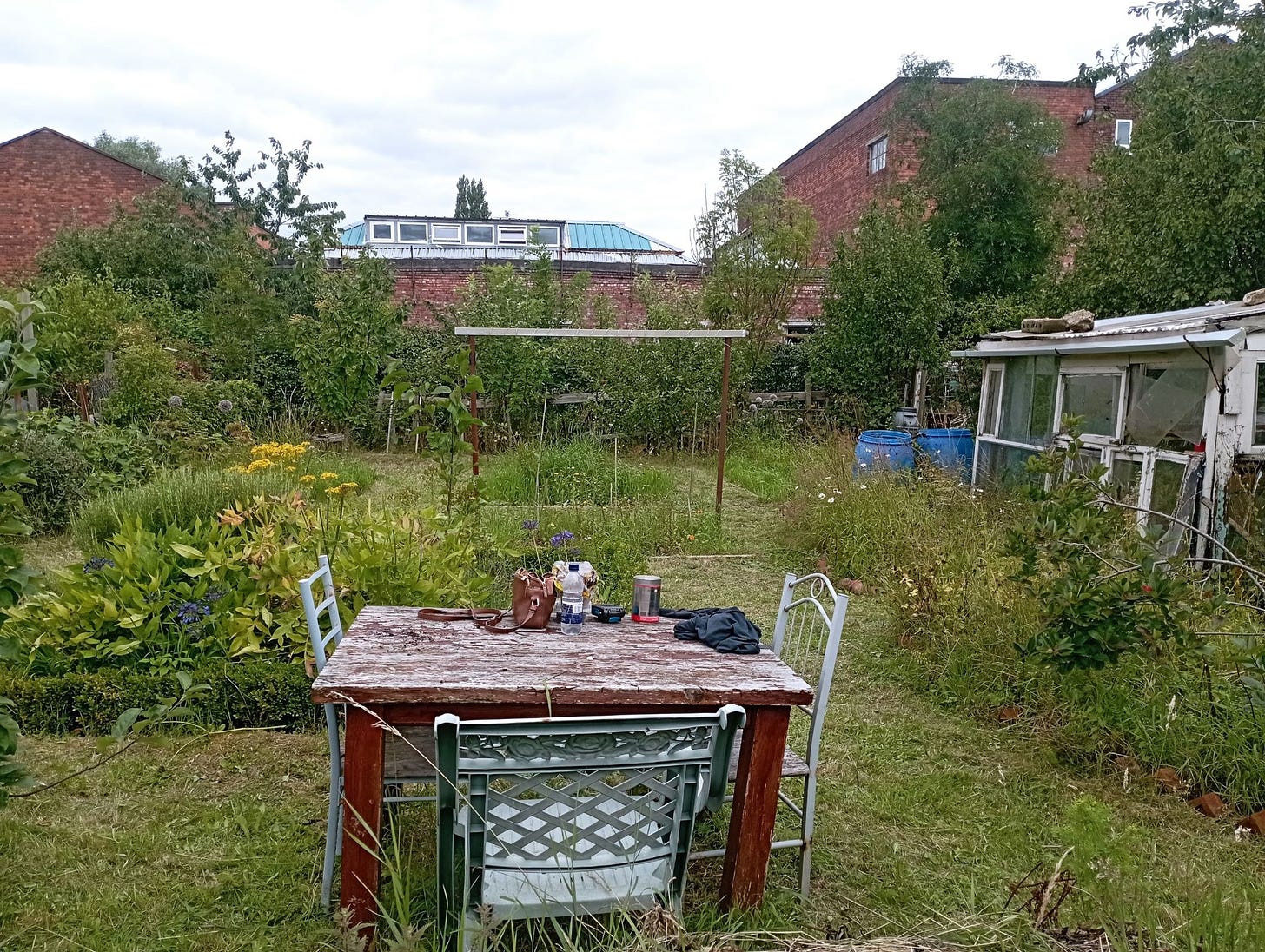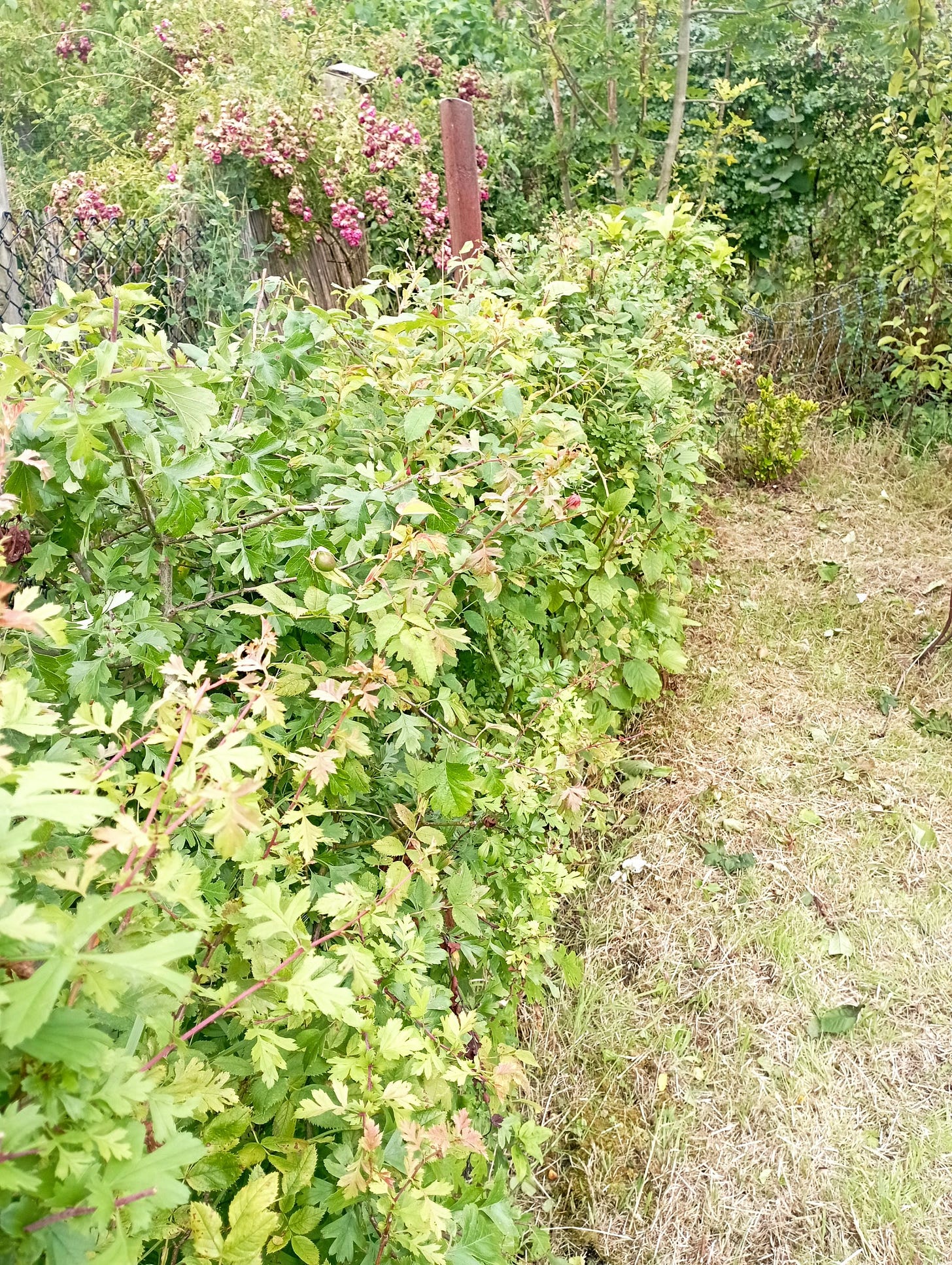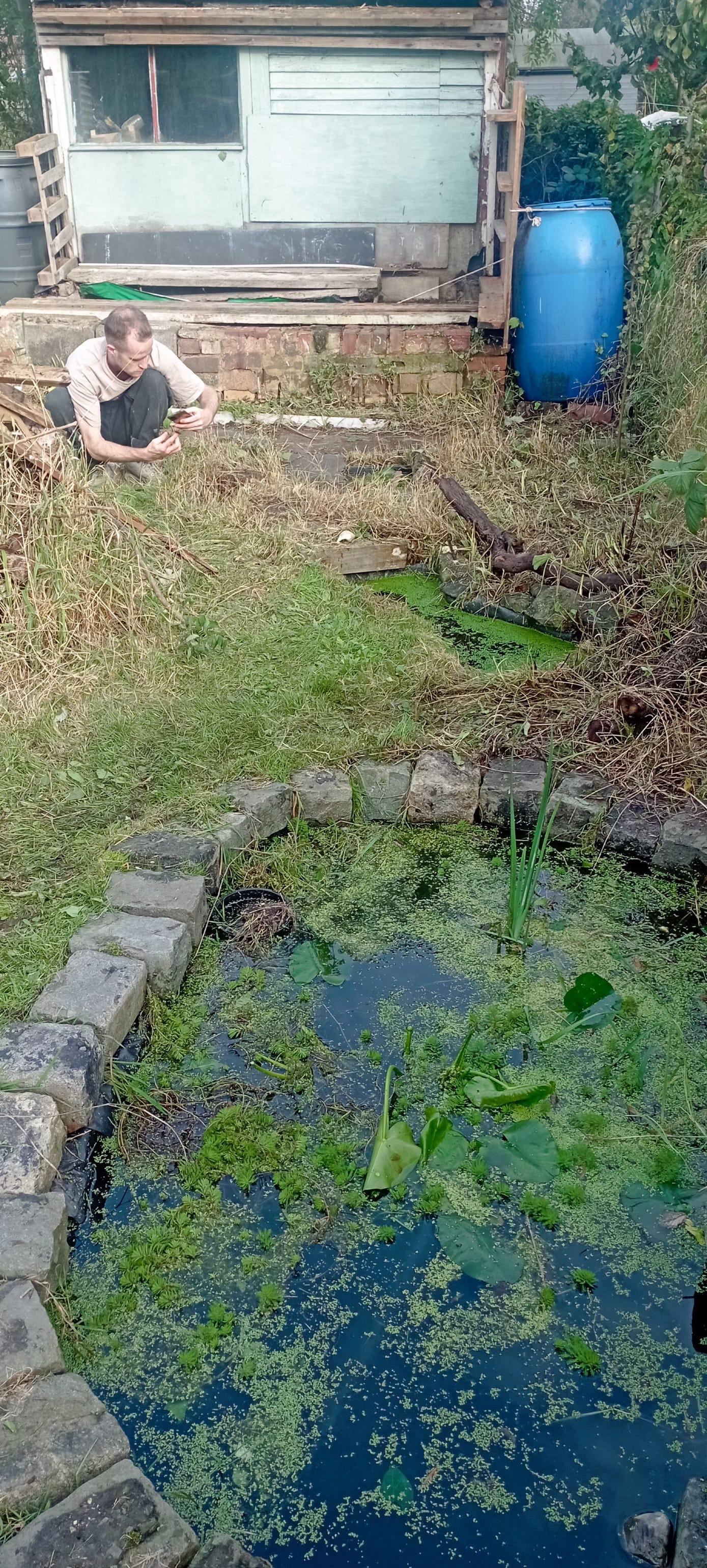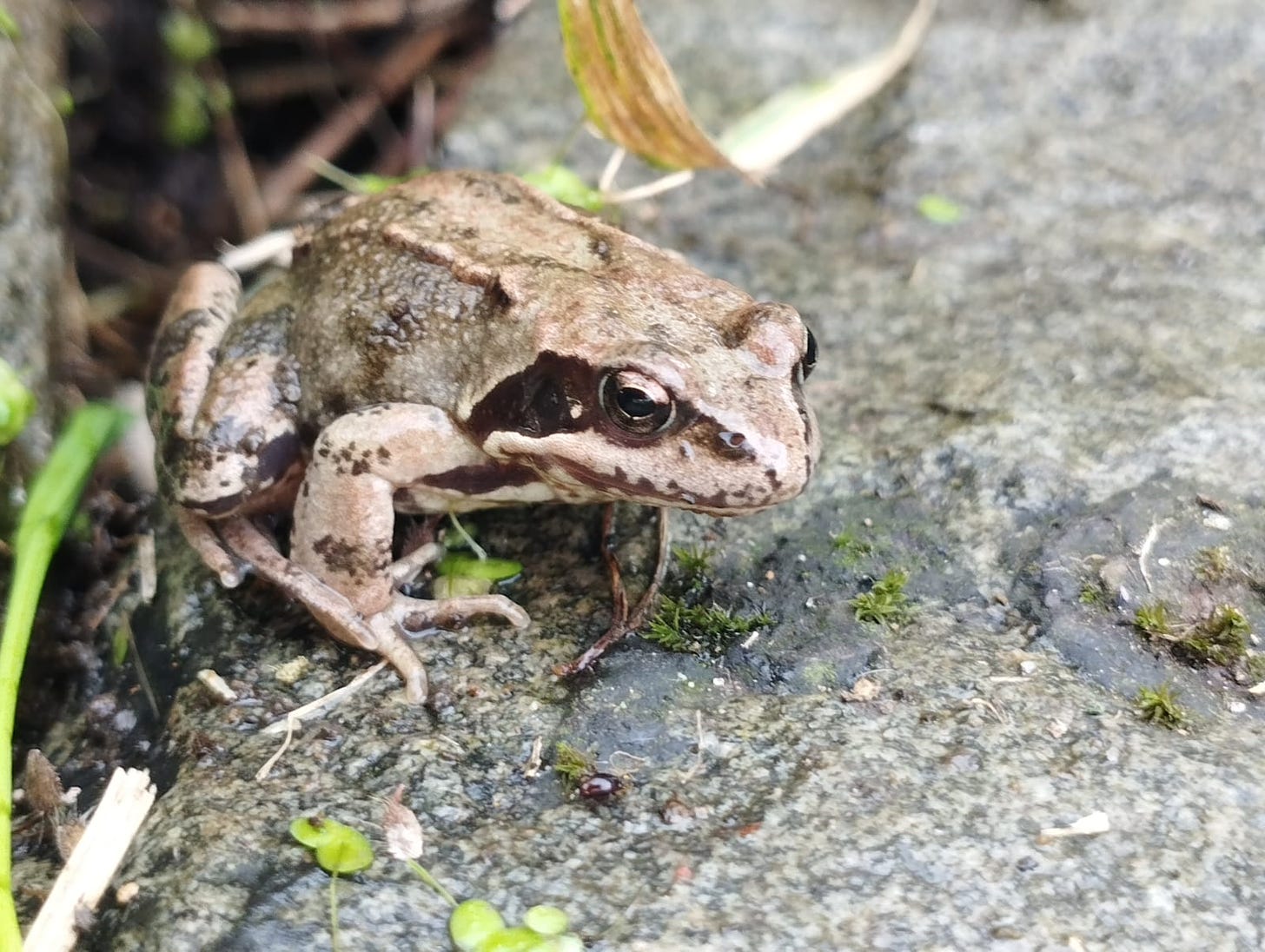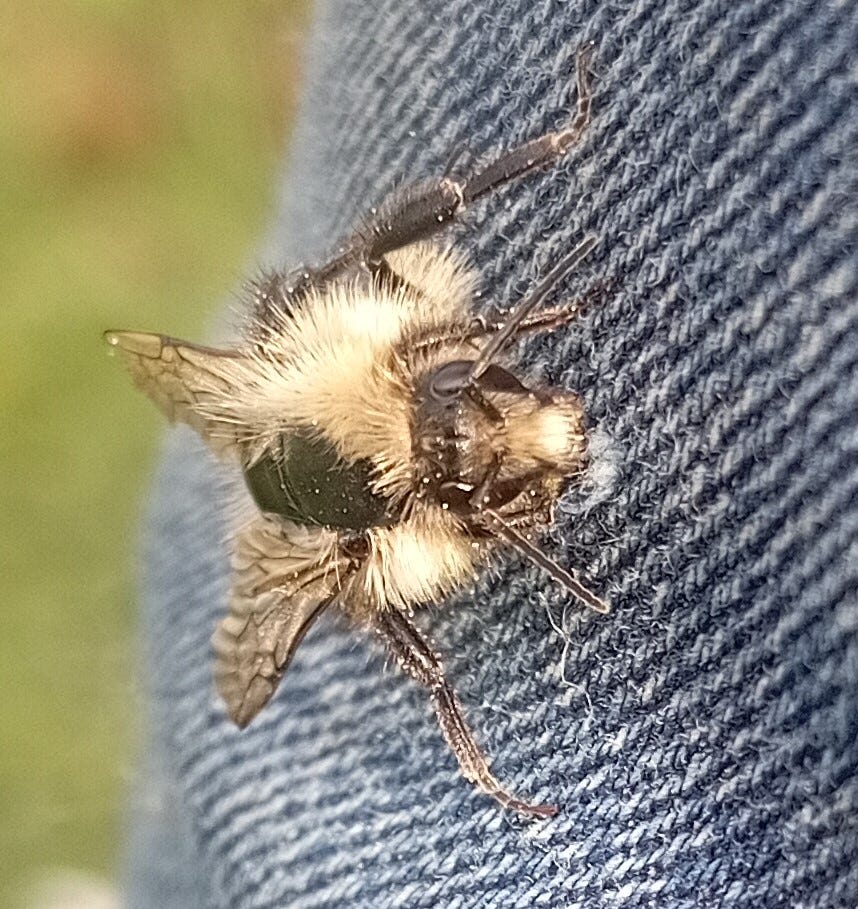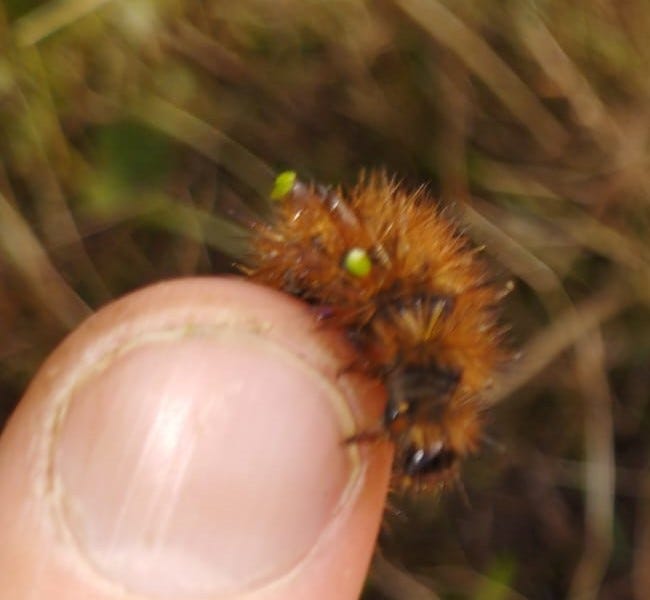Frog in my allotment pond
I got my allotment in 2017 which for various reasons was an absolute life-saver, one of which being that whilst I have a tiny garden and a roof garden in Hulme, Manchester, so I shouldn’t complain as having any outdoor space in a city is a privilege, they are both very small. So getting this fantastic allotment after a pregnant 9 month wait, was really wonderful. I was especially delighted because these allotments were far more interesting than I was anticipating. Not having been to this site before, I was expecting a small strip, like the ones you see from the train, and akin to farming practices in mediaeval England. However, the plot I opted for, from a choice of three, was more like Frances Hodgson Burnett’s Secret Garden. Surrounded by hedges and trees with a tumbledown shed which had an even more tumbledown lean-to glasshouse and another greenhouse clearly assembled out of odds and sods of windows and doors, all surrounded by grass and weeds as tall as me, it was simply a wonder to behold and the sort of project and space that I had always dreamt of.
View of the herb bed and the orchard
Unlike many other allotments, there are not many strict rules about what you can and cannot do at the site; as long as you grow produce and keep the place tidy, you have free reign. So over the years, as well as growing veg and soft fruit, I have created a large herb bed bordered by box hedging, (Buxus sempervirens), an orchard of mixed fruit trees, planted a native hedge and made four ponds, each getting bigger than the last. I had started with a deep pot and then sunk an Old Trafford recycling box that had been dumped with all the other rubbish the previous owner had usefully bought to the site. Next I bought a pre-formed pond and before I knew I was surrounded by hopping frogs of all sizes and colours. I then built a much bigger pond and added some lilies.
The mixed native hedging
One of the best things about the site is the wildlife; melodious bird song is only occasionally interrupted by music and cheers from the neighbouring Old Trafford cricket ground or the chanting from the local Mosque who have taken over the old International Wafer factory bordering the site. An old fox made its nest in the raised bed of the lean-to and sometimes I would catch her nervously trotting off through the morning mist. And then there are the frogs, the butterflies and dragonflies, the bees and the wasps.
Quite how I ended up with so many frogs hopping everywhere so quickly is beyond me. Where do they all come from!? But what a good friend of the gardener they are. I had a couple of years where all my effort of growing greens, from sowing, to pricking out, to potting on and then planting out, only to come back one day and find the whole row massacred and just a few fat slugs in their place was infinitely depressing. I tried numerous deterrents such as plastic bottles, egg shells, slug pubs, coffee grounds, human hair, but whilst all these attempts were partially helpful, nothing seemed to be able to keep my seedlings entirely safe. The trouble with allotments is that you can’t really go there late at night and start picking them off as you would in your garden. And slug pellets should be banned in my opinion. Even the so-called organic slug pellets contain ferric phosphate which are toxic to small animals and birds. But combining all those things with a good population of frogs, who along with the birds, love a good sluggy dinner, and it is transformative.
Ponds on the allotment
My first pond had been a very deep pot which I just sunk into a hole in the ground. I then found, amongst all the enormous variety of stuff on the plot that the previous plot-holder had amassed, an Old Trafford recycling box. That made a perfect pond so I dug another hole and sunk that in it. Next I bought a pre-formed pond on ebay, about 5 foot by 2 foot, but which seemed to shrink when I was back-filling the soil round the edges to about half that, and before I knew I was surrounded by hopping frogs of all sizes and colours. I then built a much bigger pond and added some lilies.
Allotment frogs
It wasn’t long before frogs were jumping everywhere, and most photogenically on the lily leaves. I have to be really careful when strimming the grass paths and using the shears on the brambles; I don’t want to have bits of poor frog splattered on my face. And every frog looks slightly different, which gives them more personality somehow. I would really love some toads and newts to join them and so I have created wood piles and easy access to all the ponds for them to join the frogs but sadly have not seen any yet.
Carder Bee
As well as lots of frogs, there are of course all sorts of bees and wasps. This bee that liked my jeans for some reason, really resembles the Shrill Carder Bee, (Bombus sylvarum) but I read that that is a threatened species, now only found in South Wales and certain locations in Southern England. Could it have joined me on my trip up north? Or perhaps it is just the Common Carder Bee (Bombus pascuorum) or the Brown Carder Bee. Or another bee entirely? Any ideas? I struggle to identify these insects, but whatever it is, it is great to see it.
And then there are the caterpillars. We certainly shouldn’t kill them, for all sorts of reasons, but largely because we are desperately short of insects. An allotment can be a haven for them and I need as many pollinating insects as possible, of which of course butterflies are essential. I have apples, pears, plums, damsons, a crab apple, a cherry, a mulberry, a fig and a wonderful quince tree on the allotment. Some of these are not self-fertilising and even if they purport to be, they will do much better if fertilised by another tree. The apples, one of the pears and the quince all fruit really well. But, despite having a fair bit of blossom, my cherry tree produced just one lonely, shrivelled fruit this year. I put this down to a failure in pollination so a semi-dwarf cherry tree is on my Christmas list. Cherries are primarily pollinated by honeybees, of which there are quite a few on the allotment as there are bee hives on site. But of course I need lots of butterflies too as they also pollinate cherries, plums and are great crab-apple pollinators.
I think this is either a fox moth caterpillar (Macrothylacia rubi), or the muslin moth Diaphora mendica), that we rescued from the pond. In any event, both caterpillars are useful as they feed on docks, dandelions, chickweed and plantains, which you don’t want too many of on the allotment.
When I got the allotment, wildlife was not foremost in my mind. I was totally focused on grand ideas of becoming virtually self-sufficient in fruit and vegetables and eating only what’s in season. But then I started to include herbs and cut flowers, which attracted swarms of insects. The wasps decided to create a big nest on my compost heap which was mostly a delight as they can pollinate my fig tree, and I only got stung once; the bluetits nested in the bird box; a robin in my straw hat in the greenhouse, and then the frogs arrived in their hundreds. My aim now is to start monitoring the insects and seeing how many more species I can attract. So the allotment has become far more than just a strip of vegetable beds; it is a really a haven of delight.




